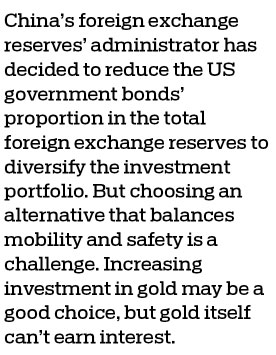Improving foreign reserve management
China has the world's largest foreign exchange reserves, about $3.12 trillion, according to official data. According to the US Department of Treasury statistics, however, by the end of June 2019, Japan held $1.12 trillion in US government bonds, more than China's $1.11 trillion, which means it has again become the largest holder of US government bonds. And given the Sino-US trade war, speculation is rife whether China will further reduce its US government bond reserves, perhaps on a large scale.
For many years, US government bonds comprised a considerable proportion of China's foreign exchange reserves. According to State Administration of Foreign Exchange data, the proportion of US dollars in China's foreign exchange reserves declined from 79 percent in 1995 to 58 percent in 2014, and the proportion of non-dollar currencies increased from 21 percent to 42 percent.

Also, China's gold reserve increased from 600 tons in 2005 to 1,852 tons in 2018, the sixth largest in the world. After the 2008 global financial crisis, there was a large-scale decline in the rate of return on assets in major developed economies. But despite the low interest rate, even a negative interest rate, worldwide, the rate of return on China's foreign exchange reserves remains relatively healthy.















